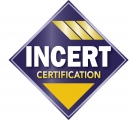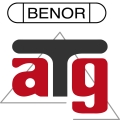Building intrusion is a relatively common crime. In addition to their valuables being stolen, it can cause potentially long-term anxiety for the people whose homes were broken into.
A detection and alarm system is not only used to discourage the thief but more specifically, to signal any intrusion into the building.
Alarm systems are therefore an effective means of protection against intrusion. They must be CE marked in accordance with the EU's Electromagnetic Compatibility Directive or the Radio Equipment Directive.
However, contrary to what most consumers think, this CE marking does not attest to the system's performance. It only guarantees a minimum immunity level against electromagnetic disturbances and minimum electrical safety, so that it can be sold in the European Union.
Effective detection and alarms require the installation of products whose reliability and immunity to false alarms are certified by ANPI: a voluntary seal of approval that attests to their quality.
We perform tests on detection and alarm components and systems in accordance with the standards and specifications below, so that they can be ANPI certified. Our tests also help to obtain INCERT certification.
- NBN EN 50131-1 Alarm systems - Intrusion and hold-up systems - Part 1 : System requirements
- NBN EN 50131-2-2 Alarm systems - Intrusion and hold-up systems - Part 2-2: Intrusion detectors - Passive infra-red detectors
- NBN EN 50131-2-3 Alarm systems - Intrusion and hold-up systems - Part 2-3: Requirements for microwave detectors
- NBN EN 50131-2-4 Alarm systems - Intrusion and hold-up systems - Part 2-4: Requirements for combined passive infra-red and microwave detectors
- NBN EN 50131-2-5 Alarm systems - Intrusion and hold-up systems - Part 2-5: Requirements for combined passive infra-red and ultrasonic detectors
- NBN EN 50131-2-6 Alarm systems - Intrusion and hold-up systems - Part 2-6: Opening contacts (magnetic)
- NBN EN 50131-2-7-1 Alarm systems - Intrusion and hold-up systems - Part 1-7-2: Intrusion detectors - Glass break detectors (acoustic)
- NBN EN 50131-2-7-2 Alarm systems - Intrusion and hold-up systems - Part 2-7-2: Intrusion detectors - Glass break detectors (passive)
- NBN EN 50131-2-7-3 Alarm systems - Intrusion and hold-up systems - Part 3-7-2: Intrusion detectors - Glass break detectors (active)
- NBN EN 50131-2-8 Alarm systems - Intrusion and hold-up systems - Part 2-8: Intrusion detectors - Shock detectors
- NBN EN 50131-3 Alarm systems - Intrusion and hold-up systems - Part 3: Control and indicating equipment
- NBN EN 50131-4 Alarm systems - Intrusion and hold-up systems - Part 4: Warning devices
- NBN EN 50131-5-3 Alarm systems - Intrusion alarm systems - Part 5-3: Requirements for interconnections equipment using radio-frequency techniques
- NBN EN 50131-6 Alarm systems - Intrusion and hold-up systems - Part 6: Power supplies
- NBN EN 50131-10 Alarm systems - Intrusion and hold-up systems - Part 10: Application-specific requirements for supervised premises transceivers
- NBN EN 50136-1 Alarm systems - Alarm transmission systems and equipment - Part 1: General requirements for alarm transmission systems
- NBN EN 50136-2 Alarm systems - Alarm transmission systems and equipment - Part 2: Requirements for supervised premises transceivers (SPT)
- NBN EN 50136-3 Alarm systems - Alarm transmission systems and equipment - Part 3: Requirements for receiving centre transceivers (RCT)
- CEB T 014 General requirements for tests on alarm systems
- CEB T 014A General requirements for tests on alarm systems which use radio-electrical connections
- CEB T 031 General requirements for tests on alarm systems including NBN EN 50131 requirements
- CEB T 033 Additional requirements for tests on alarm systems
You would like to receive further information about our test: laboratoires@anpi.be
You would like to receive a quotation: sales@anpi.be






